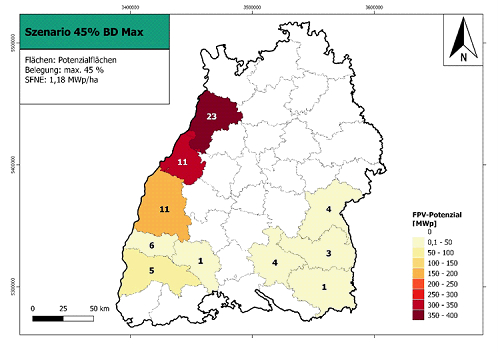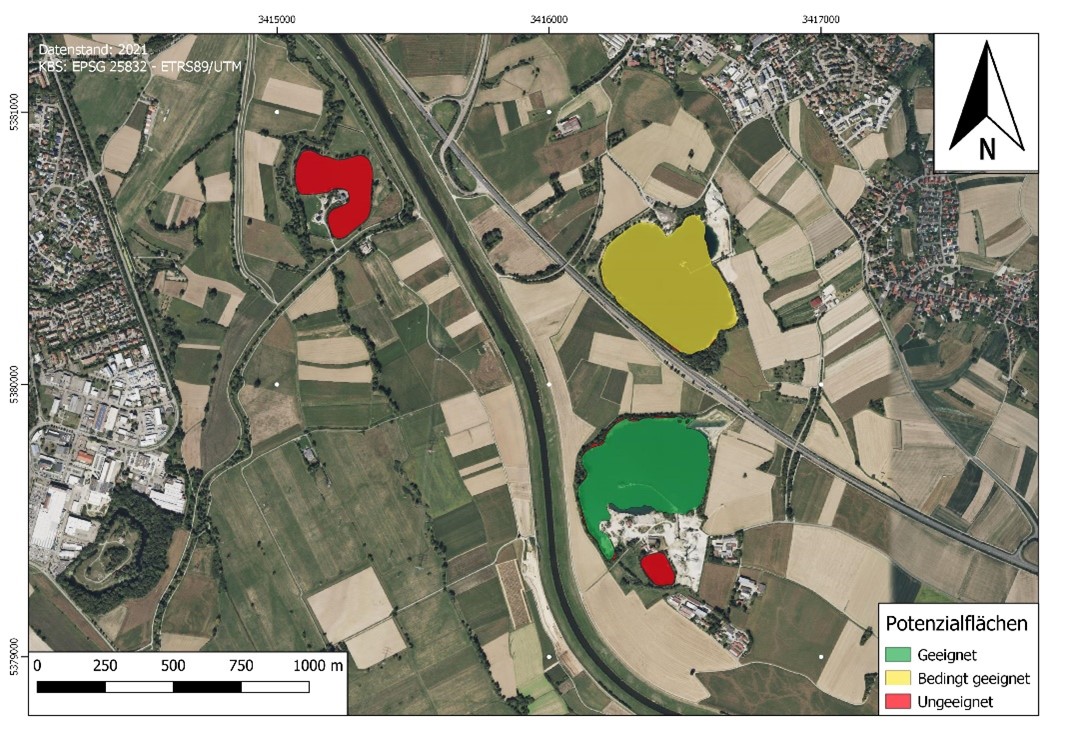Large Potential for Floating PV on Pit Lakes in the Upper Rhine Valley in Baden-Wuerttemberg
Floating photovoltaics, or FPV, can help to resolve land use conflicts arising due to the expansion of renewable energy in Germany. A research team from the Fraunhofer Institute for Solar Energy Systems ISE has now calculated the potential of photovoltaic generation on pit lakes at active mining sites in Baden-Württemberg. Such lakes are not suitable for recreational activities, tourism, nature conservation or landscape protection; however, they are, on the contrary, particularly suitable for floating photovoltaics. According to the recent study, FPV systems with a total rated power of 280 to 1,070 megawatts could be installed on artificial bodies of water within the state. This takes into account practical constraints and depends on the ecologically motivated upper limit for PV coverage on pit lakes.

On behalf of the Ministry of the Environment, Climate Protection and the Energy Sector of Baden-Württemberg, researchers at Fraunhofer ISE considered pit lakes which had not undergone renaturation. They calculated the economical and practical feasibility potential for FPV for each of these lakes in Baden-Württemberg, determining which share of the water surface is suitable for floating PV.
Depending on the values chosen for suitable coverage density and maximum PV coverage for the 69 water surfaces, the economically and practically feasible power potential for these lakes varied from 280 to 1,070 megawatts. The authors of the study found that the most suitable water areas were in the Upper Rhine valley. "This corresponds to the high lake density and the clustered occurrence of sand and gravel mining in this region," says Konstantin Ilgen, co-author of the study at Fraunhofer ISE. "At the same time, the electricity generated can be consumed directly on site by the adjacent graveling plants. Such plants mostly have a high electricity demand, which could be met by photovoltaics instead of fossil fuels."

In the case of pit lakes at active extraction sites, it is assumed that the ongoing gravel work has not yet allowed an ecosystem with high biodiversity or protected species to develop. Since the goal in Baden-Wuerttemberg is to implement the FPV technology in an environmentally friendly manner, this limitation minimizes uncertainties regarding the impact of floating PV on lake ecology. If pit lakes at mining sites that are no longer active were included in the considerations, the total potential area of floating PV would almost double.
Last modified: